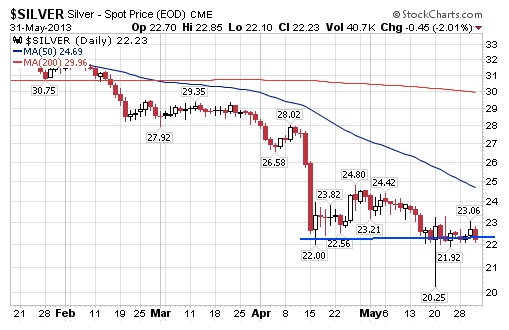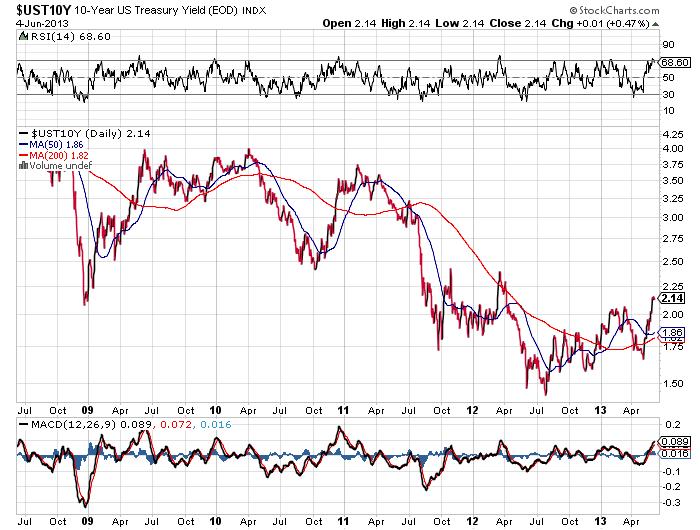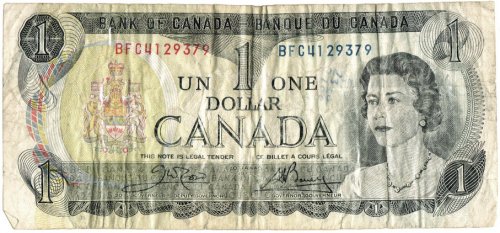“I’ve been wrestling with a moral question. Would it have been better to allow the bear market of 2008-09 to continue down to its ultimate and natural conclusion — or would it have been preferable to “step in” (as the Bernanke Fed did) and attempt to halt the bear market in its tracks? Of course, we know that Ben Bernanke chose the latter course, which meant attempting to halt the bear market.
Personally, I’ve voted against the Bernanke way. The reason is that I never thought it was possible to halt and then reverse the primary trend of the stock market or the economy — any more than I think we can halt the dawn and thus hold back the night.
One of the basic theorems of Dow Theory is that the primary trend of the market cannot be reversed. Once a bull or bear market is under way, one way or another, it will run its course to conclusion. The primary trend of the market and the economy is based on human sentiment — greed and fear, bear markets and bull markets end in exhaustion. Bear markets end when the last sellers have exhausted their desire to sell. Bull markets end when the last group of buyers have had enough.
After reading my Thursday site on megaphone formations, subscribers may now be wondering whether Friday’s action represented the start of the collapse in the Dow’s megaphone formation. Unfortunately, I must state that there is absolutely no way of knowing. This means that holders of stocks must make a personal decision. Sell or take the consequences — if, indeed, the great megaphone pattern in the Dow is in the early stage of crashing.
Personally, I never wanted to be in this position. I have already made the judgment that this market was over-bought, over-valued and over-loved. I also noted that margin borrowing on the NYSE was near a record high — investors were borrowing heavily and greedily to increase their positions in this market. Treasury bonds were sliding and interest rates were rising.
Incidentally, I note that there are now five distribution days for the S&P and four for the Nasdaq. And one churning or stalling day on Thursday. This tells me that institutional money wants OUT of this market, which is another indication that being out of this market is the correct position. A stalling day is a session in which the market is up only slightly on rising volume.
We’re now in June which, historically, is the worst month for stocks. The next five months make up the “bad” six months of every year for stocks (“Sell in May and go away”). All things considered, this is not a market I want to be in. My preference has been to buy dividend-paying blue chip stocks at or near bear market bottoms, at which time great stocks are usually sold for whatever the bid may be (and the bids at a bear market bottom are usually “below known value”). Conclusion — I would probably stay with this market if I owned the diamonds (DIAs), and be ready to sell if the market turns nasty. If I was out of the market I would stay out.”
“I believe Fed chief Bernanke thought he was doing a good and patriotic deed when he stepped into the market in 2009. Bernanke believed that the Fed made terrible mistakes during the 1930s, and that he, Bernanke, now knows better. Bernanke even went so far as to apologize to the nation for the Fed’s mistakes during the 1930s. Bernanke believed that he had learned from the Fed’s errors during the Great Depression, and that this time the Fed, under his (Bernanke’s) supervision would do it better.
In the coming weeks and months we will have a chance to see whether Bernanke can “do it better.” From my standpoint, I see only two courses for the Bernanke Fed, (1) sit tight and HOPE that everything works out as originally planned, or (2) step up QE-2-infinity even further on the thesis that “if first, you don’t succeed, then try, try again.”
Other than that I see the picture as a battle — the Bernanke Fed versus the power of the primary trend (plus perhaps the unintended consequences of attempting to halt the path of the great primary trend).”
“Gold represents wealth. It is the staple around which everything else revolves. Alan Greenspan agreed with this in an article he wrote in 1966. But when Greenspan was chosen as Fed chief, he turned his back on gold in favor of power and prestige and Federal Reserve notes.
From there, his career went downhill, he’s now considered a sad joke. When Ben Bernanke was asked if gold was money, he dodged the question, and by omission he denied that gold was money. This was the beginning of his troubles. He was living a lie.
When you start with a dishonest premise, everything that follows will fail to work. The Constitution of the United States (Article 1 Section 10) tells us that “No State shall make any Thing but gold and silver Coin a Tender in payment of debts.”
The Federal Reserve acts on the thesis that their Federal Reserve notes can be used as tender in the payment of debts, a premise in direct opposition to the US Constitution. I see this betrayal as the basic cause for all the troubles that we are now contending with.
The ratio of debt to Gross National Product in the US is climbing up off the charts. This never could have happened if the gold standard was in use. The US is like a 500 pound fat man who faces the choice of an extreme diet or a lingering death. To actually solve our problem, Americans would have to choose an extreme decline in living standards (and deflation) while at the same time boosting their savings radically. Americans would never submit to a drastic decline in our living standards and deflation. The unappetizing other side of the coin is that we continue to live it up, while China buys up our nation, piece by piece.
What is the worst possible environment for investing? The Fed has given it to us — A low interest environment along with an eroding currency. That’s what we have now. At present there’s no perfect or even a satisfactory investment position. You are not safe in bonds, you are not safe in stocks, and you are not safe in cash. Which is why I choose gold. It doesn’t bring in income, but it will be around when everything else is in ruins. And if the whole current house of cards starts to fall apart, chances are that there will be a huge panic to own gold, which is out of the Fed’s and the government’s grip.”
Russell’s warning for silver bears: “Everybody hates silver, and everybody wants to short it. But keep your eye on silver.” (the chart on the day he published these extraordinary comments)

The Chart Close of business June 4th:

To subscribe to Richard Russell’s Dow Theory Letters CLICK HERE.
About Richard Russell
Russell began publishing Dow Theory Letters in 1958, and he has been writing the Letters ever since (never once having skipped a Letter). Dow Theory Letters is the oldest service continuously written by one person in the business.
Russell gained wide recognition via a series of over 30 Dow Theory and technical articles that he wrote for Barron’s during the late-’50s through the ’90s. Through Barron’s and via word of mouth, he gained a wide following. Russell was the first (in 1960) to recommend gold stocks. He called the top of the 1949-’66 bull market. And almost to the day he called the bottom of the great 1972-’74 bear market, and the beginning of the great bull market which started in December 1974.
The Letters, published every three weeks, cover the US stock market, foreign markets, bonds, precious metals, commodities, economics –plus Russell’s widely-followed comments and observations and stock market philosophy.
In 1989 Russell took over Julian Snyder’s well-known advisory service, “International Moneyline”, a service which Mr. Synder ran from Switzerland. Then, in 1998 Russell took over the Zweig Forecast from famed market analyst, Martin Zweig. Russell has written articles and been quoted in such publications as Bloomberg magazine, Barron’s, Time, Newsweek, Money Magazine, the Wall Street Journal, the New York Times, Reuters, and others. Subscribers to Dow Theory Letters number over 12,000, hailing from all 50 states and dozens of overseas counties.
A native New Yorker (born in 1924) Russell has lived through depressions and booms, through good times and bad, through war and peace. He was educated at Rutgers and received his BA at NYU. Russell flew as a combat bombardier on B-25 Mitchell Bombers with the 12th Air Force during World War II.
One of the favorite features of the Letter is Russell’s daily Primary Trend Index (PTI), which is a proprietary index which has been included in the Letters since 1971. The PTI has been an amazingly accurate and useful guide to the trend of the market, and it often actually differs with Russell’s opinions. But Russell always defers to his PTI. Says Russell, “The PTI is a lot smarter than I am. It’s a great ego-deflator, as far as I’m concerned, and I’ve learned never to fight it.”
Letters are published and mailed every three weeks. We offer a TRIAL (two consecutive up-to-date issues) for $1.00 (same price that was originally charged in 1958). Trials, please one time only. Mail your $1.00 check to: Dow Theory Letters, PO Box 1759, La Jolla, CA 92038 (annual cost of a subscription is $300, tax deductible if ordered through your business).
IMPORTANT: As an added plus for subscribers, the latest Primary Trend Index (PTI) figure for the day will be posted on our web site — posting will take place a few hours after the close of the market. Also included will be Russell’s comments and observations on the day’s action along with critical market data. Each subscriber will be issued a private user name and password for entrance to the members area of the website.
Investors Intelligence is the organization that monitors almost ALL market letters and then releases their widely-followed “percentage of bullish or bearish advisory services.” This is what Investors Intelligence says about Richard Russell’s Dow Theory Letters: “Richard Russell is by far the most interesting writer of all the services we get.” Feb. 19, 1999.
Below are two of the most widely read articles published by Dow Theory Letters over the past 40 years. Request for these pieces have been received from dozens of organizations. Click on the titles to read the articles.
“Rich Man, Poor Man (The Power of Compounding)“
“The Perfect Business“





 A slowdown is on the way and there’s a 50-50 chance of recession in Canada by the middle of next year, argues Berezin, managing editor of the monthly newsletter
A slowdown is on the way and there’s a 50-50 chance of recession in Canada by the middle of next year, argues Berezin, managing editor of the monthly newsletter  “The whole Financial System could blow up due to the huge amount of Derivatives still outstanding.”
“The whole Financial System could blow up due to the huge amount of Derivatives still outstanding.” 











